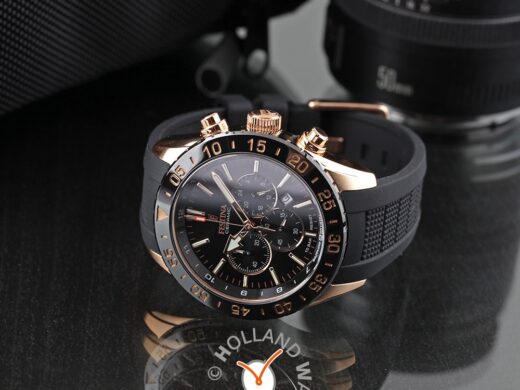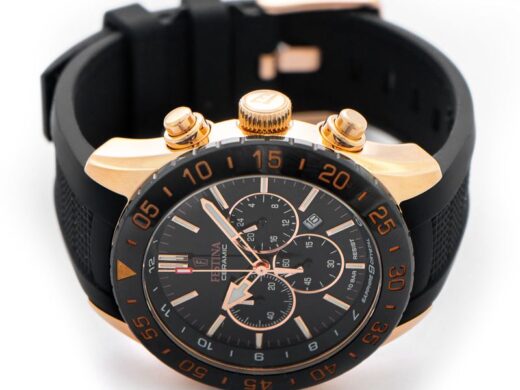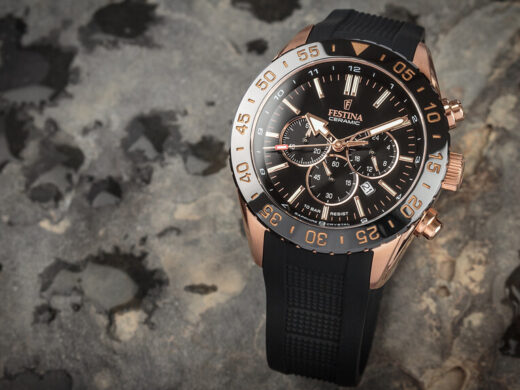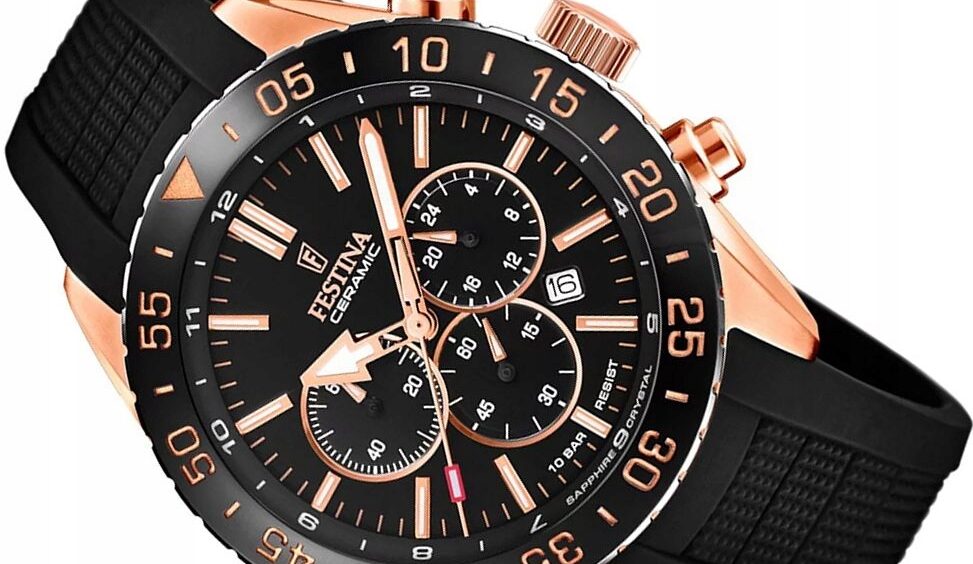Today, we are going to review a watch from Festina, an intriguing brand I’ve recently discovered. Specifically, we’re going to explore the Ceramic Chronograph. This sporty model was launched as a distinct timepiece in their collection. It is worth noting that I have a quite conservative taste when it comes to watches, meaning I usually prefer a high-quality steel case that can include precious metals in certain components. Surely, a genuine leather band is always a must. I was not a fan of ceramic watches up until now.
I am familiar with brands such as Boccia and Rado who have implemented the use of ceramics in their timepieces. Surely, I always knew that even Rolex, IWC or Omega have sometimes included ceramic components in some of their designs. Nevertheless, I never really wanted to have a ceramic wristwatch for myself. The Festina Ceramic Chronograph is now here to change my mind. To be frank, upon holding this timepiece in my hands I immediately felt drawn to it. Apart from its attractive visual appeal, the fact that it was a chronograph already won me over.

Despite its name, only the bezel was constructed of ceramic, which is something we often find on high-end watches. That’s part of the reason why I was so interested in this particular timepiece. This timepiece caught my attention right away. The combination of the rose gold tones and the black dial is particularly impressive. Creating a pleasant contrast, these colors add to this watch’s aesthetic. This chronograph is equipped with three sub-dials at the 3, 6 and 9 o’clock position. The date window was skillfully placed between the 4th and 5th position.
Although the dial is full of features, everything is perfectly legible. The balanced features create a tasteful harmony. Sapphire crystal is used to cover the front of this timepiece. The back is secured by screws and a water resistance of 100m makes this watch a reliable everyday accessory. The hands and indices are luminous, which is a nice touch. Surely, the bold and robust ceramic bezel is what stands out the most.
As I’ve already mentioned, I have a particular soft spot for chronographs. There is a stopwatch control on its right (you can double click the upper button for the stopwatch to start or stop and you can click the lower button to reset the measured values). The crown is screwed down and it never fails to attract attention. Operated by a battery, this timepiece features an accurate quartz movement.

A steel bracelet is used for this model. It comes with a folding clasp which displays the Festina logo. The suspension of the pins is 21.8 mm. It is worth mentioning that this watch comes with a sports rubber band and pin buckle. The bezel is fixed, which in my point of view is a bit of a loss. Since the bezel can’t be moved, the 60 minute scale doesn’t serve a utility function. The most striking element surely is the material used.
It is stated that ceramic is stronger than steel, providing amazing scratch-resistant properties. However, there is a higher risk of it getting brittled. Nevertheless, ceramics stand out for its toughness, chemical stability and anti-allergic properties. Ceramic elements are highly durable in comparison to ordinary metals. Therefore, the bezel on the Festina Ceramic Chronograph guaranteed amazing scratch resistance. It will surely remain in its pristine condition for years to come, even with frequent use. Moreover, its beautiful color will remain the same even if continuously exposed to UV lightning.
Ultimately, it seems that ceramic would be the perfect material for watch manufacturers. However, it comes with one disadvantage. We already talked about its chances of getting brittled. Although it is extremely resistant to scratches, if you were to accidentally drop this watch on the ground, there is a risk that some part of the ceramic bezel would chip off. Nevertheless, considering its price, this Festina wristwatch is definitely a worthy investment.

About the brand
Festina, a renowned watch manufacturer with roots in La Chaux-de-Fonds, Switzerland, has undergone significant changes throughout its history. Originally established in 1902 as a watch assembler and marketer, the brand was later acquired by Miguel Rodriguez, a Spanish entrepreneur who also owned the Lotus watch brand. With the two brands combined, Festina Lotus SA was formed, and its administrative offices were relocated to Barcelona, Spain. In 1989, the company further expanded by acquiring the Jaguar brand. This strategic move proved successful, as Festina’s production increased to 1 million watches per year by 1990 and 3 million by 2002. Today, Festina is a part of the Festina Group, which remains headquartered in Barcelona.
In 2003, Miguel Rodriguez aimed to solidify Festina Group’s position in the high-end Swiss manufacturing sector, prompting the acquisition of Dubois Technique Horlogère (now known as MHVJ) and Astral Technologies, a hairspring maker. Later in 2008, STM Holdings, owned by Hong Kong holding company Peace Mark and including Swiss component makers Indtec, Ineltec, and Soprod, faced financial challenges and was sold to Rodriguez. Festina Group kept the upscale Swiss segments of the company, now referred to as Soprod, while discontinuing the mass-market quartz operations.
At present, Festina Group operates as a multi-brand watch manufacturer with a complex holding company structure. Their portfolio includes several brands, such as Festina, Candino, Jaguar, Perrelet, L. Leroy, and Calypso. While Citizen of Japan manages a significant portion of watch production, some high-end manufacturing occurs in Barcelona. Notably, Soprod, a Swiss manufacturer acquired by Festina Group, possesses the expertise to produce all watch components in-house, further enhancing their capabilities.


No comments yet.